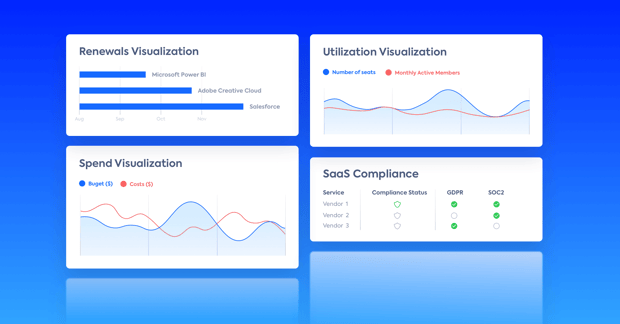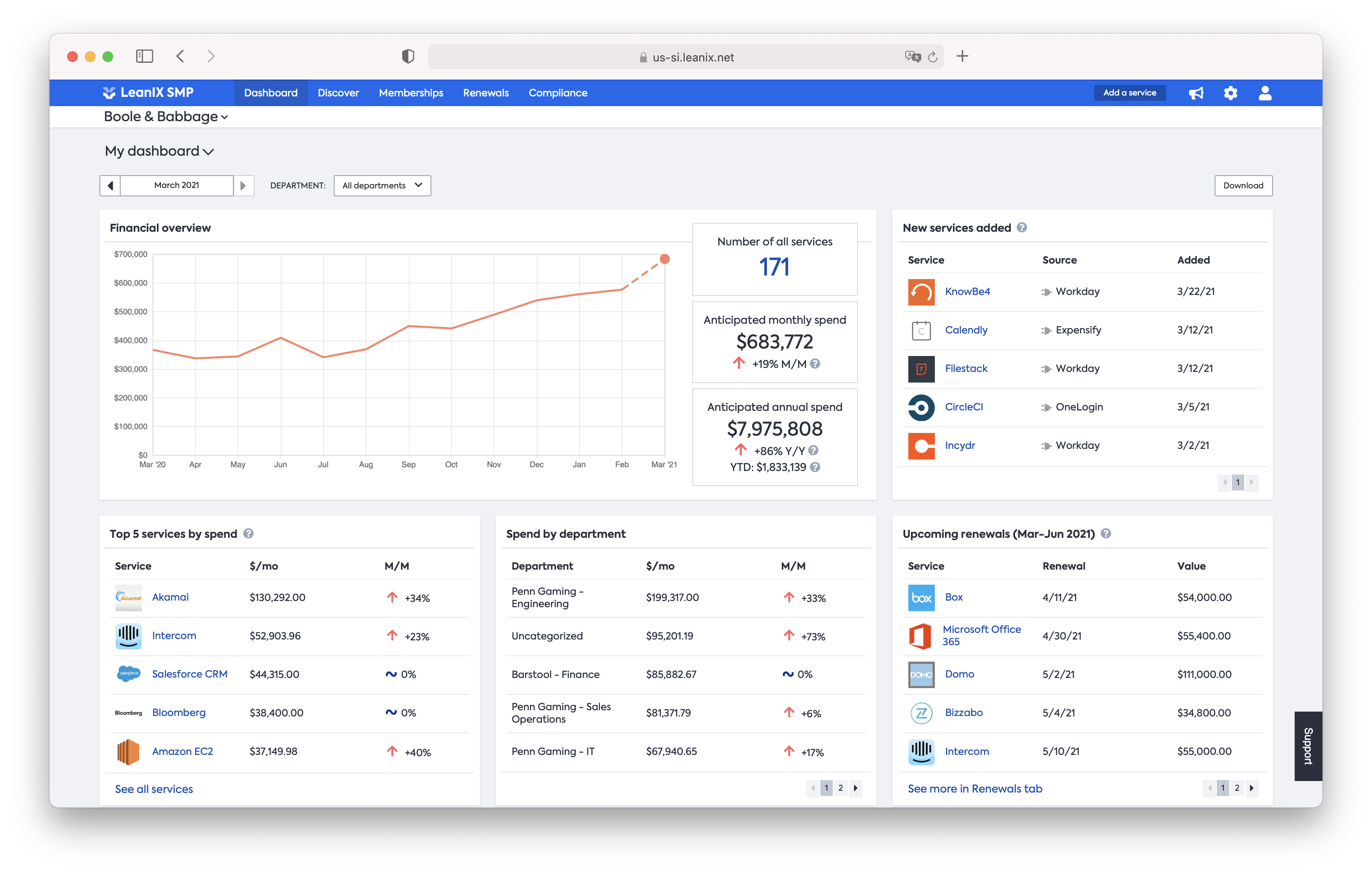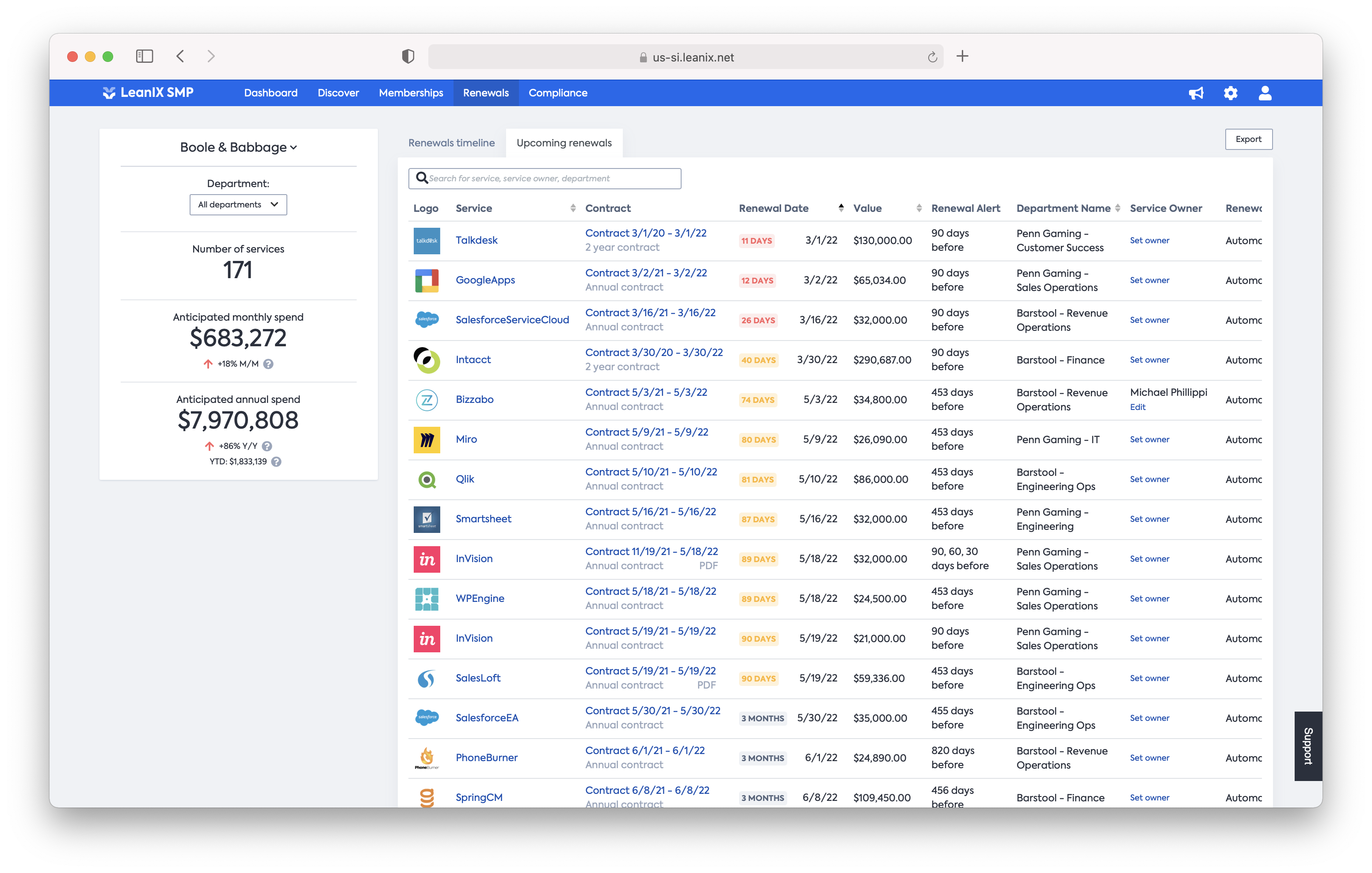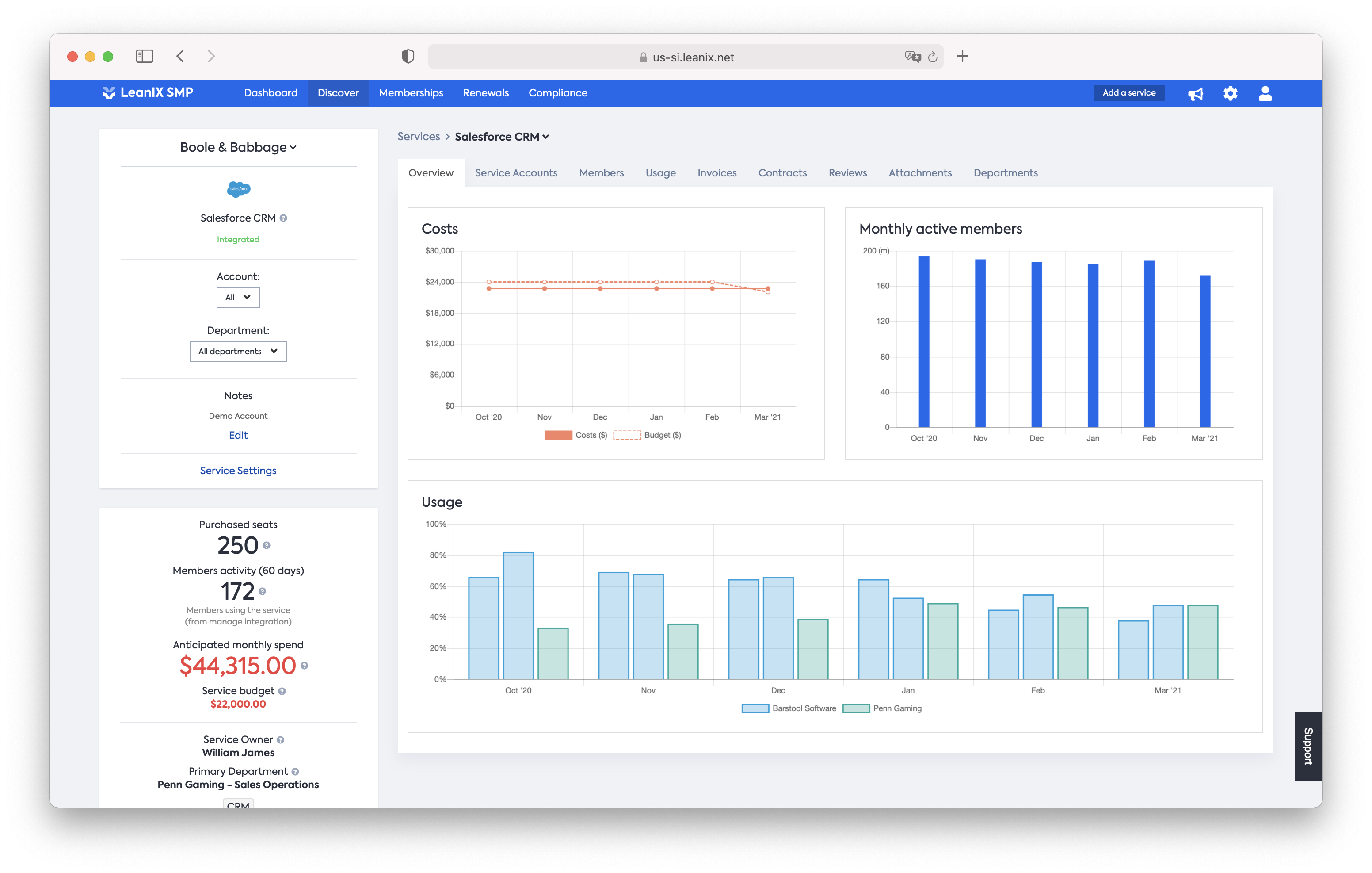
Over the past decade SaaS has transformed modern business and become the foundation on which companies in every industry now operate. Enterprises use more than 650 software applications on average (and the largest 10% uses 3400+) for core business functions from marketing to sales to customer service to HR to IT management and more.
The challenge for many companies, however, is that SaaS license management hasn’t caught up with the speed of application adoption. The result? Unneeded and unused licenses, overpayment for licenses you do have, unplanned (even unwanted) renewals, and a lot of wasted money.
The sad part is, without a system for SaaS license management in place, companies often don't even realize the extent of the problem.
In this article, we’ll cover the specific challenges that the rise of SaaS has brought with it, as well as actionable ways to operationalize your SaaS license management strategy.
Quick Takeaways
- SaaS license management has become a mission-critical business capability.
- The pandemic ushered in a rise in remote work and an increased focus on digital customer experiences significantly expanding use cases for SaaS.
- SaaS management platforms provide key functionality including streamlined workflows and reporting, continuous monitoring, and centralized oversight.
- Successful SaaS license management requires participation from stakeholders across the organization.
The Impact of the SaaS Licensing Model
The market size for SaaS has steadily grown and is expected to more than quadruple by 2024.
SaaS grew because the subscription-based business model appealed to customers. They were happy to adopt a pay-per-use pricing structure that eliminated the need for hefty up-front financial investment and ongoing application management costs.
In 2020, the pandemic accelerated the need for SaaS solutions. Their cloud-based delivery model, allowing access from anywhere with security covered by the SaaS vendor, was perfectly suited for remote work. What's more, with in-person meetings off the table for the moment, these solutions also supported the emergent need for digital customer interactions.
Even as we move into a post-pandemic business environment, it’s clear that many SaaS use cases, such as remote work and distributed collaboration, are here to stay. For these and other purposes, the speed, convenience, and efficiency offered by SaaS just can't be beat.
Since the need for SaaS isn't going away, companies need long-term SaaS license management strategies to optimize costs, keep their application landscape clean, and connect SaaS investment to real business value.
Optimizing SaaS License Management: 7 Budget-Friendly Tips
Invest in a platform solution
Effective SaaS license management does require an initial financial investment — purchasing a platform solution — but without this first critical step, it’s nearly impossible to do.

Dashboard offering an in-depth overview of the SaaS portfolio as seen in LeanIX SMP
Leading SaaS management solutions can automatically discover your entire SaaS portfolio, consolidate all your SaaS licenses into one central place, and provide workflow implementation tools and access controls. They also feature the reporting capabilities needed to address redundancy and obsolescence risk to keep your tech stack optimized.
Rationalize your application portfolio
Companies can't function without software. But SaaS has made it all too easy for companies to purchase more software than they need.
Rationalizing your application portfolio starts with mapping the software you own to the business capabilities it needs to support. Of course, this also means that you actually know what software you own (which is where automated SaaS discovery comes in).
One result of this mapping exercise is that it allows you to identify areas where you have redundant applications – that is, multiple applications supporting the same business capability. At the same time, it shows you where you have applications that don't really support any critical capability at all.
Being able to compare what you have to what you need is critical if you want to also right-size your SaaS license portfolio.
Set alerts for unwanted scenarios
With the right platform solution in place, you don’t have to depend on manual (and thus sometimes hit-or-miss) strategies for identifying and solving SaaS license issues. You can easily automate the process using rules and alerts.
Rules allow you to set parameters around potential risks – SaaS applications exceeding a certain cost limit, unused licenses, impending renewals – and generate alerts when those parameters get crossed.

List of upcoming renewals with alerts as seen in LeanIX SMP
With a rules and alert system in place, potential issues can be proactively addressed before they balloon into bigger problems.
Develop a business-led procurement processes
SaaS appeals to many in the business because you can purchase and start using this or that application with a simple credit card. No need to include IT or procurement!
As appealing as this is for business owners, it's a security nightmare for IT and a spending nightmare for procurement. Unfortunately, attempts to rein things in through centralized control are almost always doomed to failure.
The fact of the matter is, the business (not IT or procurement) should be able to make decisions about the tools it needs. Software purchasing, in other words, should be "business led." The trick is allowing this without SaaS purchasing leading to a security and spending chaos.
By automating discovery and enabling effective tracking of SaaS licenses, the right SaaS management platform will allow contributors and managers across the organization to make timely purchasing decisions. At the same time, it will also allow IT and finance leaders to maintain oversight of SaaS assets — a win-win scenario.
Continuously track costs and spending
An obvious and essential part of SaaS license management is tracking costs and spending. Consistent and regular reporting (again, a platform makes this easy) helps you avoid unnoticed overspend and make decisions about consolidating licenses or eliminating them altogether.

SaaS application drill down of cost, usage, and utilization metrics as seen in LeanIX SMP
Empower contributors organization-wide
Platform or not, effective SaaS license management requires participation and buy-in from users, managers, and other stakeholders across the organization. The best way to get that buy-in is to educate everyone on the risks associated with SaaS as well as the best practices and processes required to avoid them.
Monitor and report on important KPIs
How is your SaaS license management strategy actually making an impact? It’s a question you can’t answer without a data-driven reporting plan in place. Identify key KPIs for a designated period of time (ex: reduce SaaS waste by 10% this quarter) and monitor progress frequently to keep you on track.
Over to You
The right SaaS management platform can be the difference between an IT strategy that weighs you down and one that drives real business growth. We have built our continuous transformation platform to help you discover, optimize, and manage your SaaS applications with ease.





